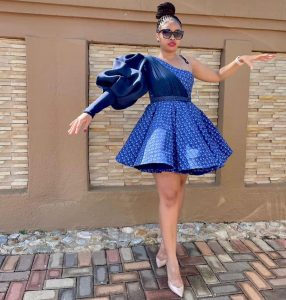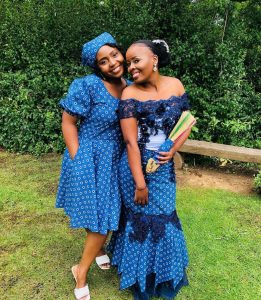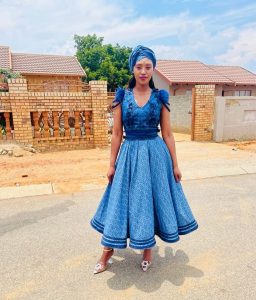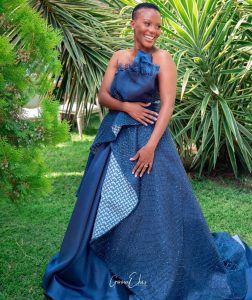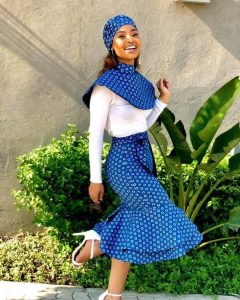Tswana Traditional Dresses: From Past to Present, a Journey of Fashion Evolution
Tswana Traditional Dresses: From Past to Present, a Journey of Fashion Evolution
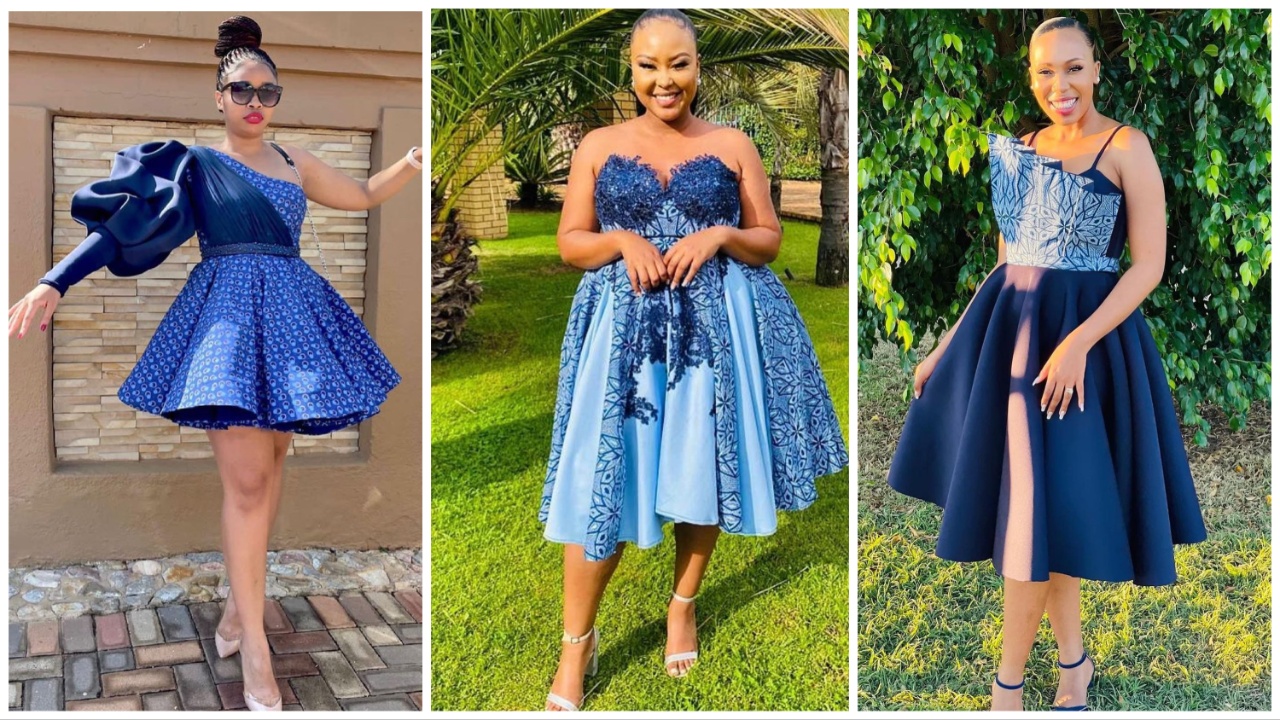
Traditional Tswana Dress Styles
Different styles and designs of Tswana traditional dresses
Tswana traditional dresses are known for their vibrant colors, intricate patterns, and unique designs. These dresses have evolved over time, blending traditional elements with modern fashion trends.
One popular style is the “pelele” dress, characterized by its flared skirt and fitted bodice. It is often made from colorful fabric with bold patterns, showcasing the rich cultural heritage of the Tswana people.
Another style is the “mokgonyana” dress, which features a high collar and long sleeves. This dress is often adorned with embroidery or beadwork, adding a touch of elegance and sophistication.
The “moshweu” dress is another traditional Tswana dress style that has gained popularity. It is a long, flowing gown with a fitted bodice and a flared skirt. The dress is usually made from luxurious fabrics such as silk or satin and is often worn for special occasions like weddings or cultural ceremonies.
Tswana Traditional Dresses: From Past to Present, a Journey of Fashion Evolution
In recent years, there has been a resurgence of interest in Tswana traditional dresses, with designers incorporating modern elements to create unique fusion styles. These fusion dresses combine traditional Tswana aesthetics with contemporary cuts and fabrics, appealing to both younger generations and fashion enthusiasts.
Whether you choose a traditional Tswana dress or a fusion style, wearing these dresses not only showcases the beauty of Tswana culture but also celebrates the diversity and richness of African fashion as a whole.
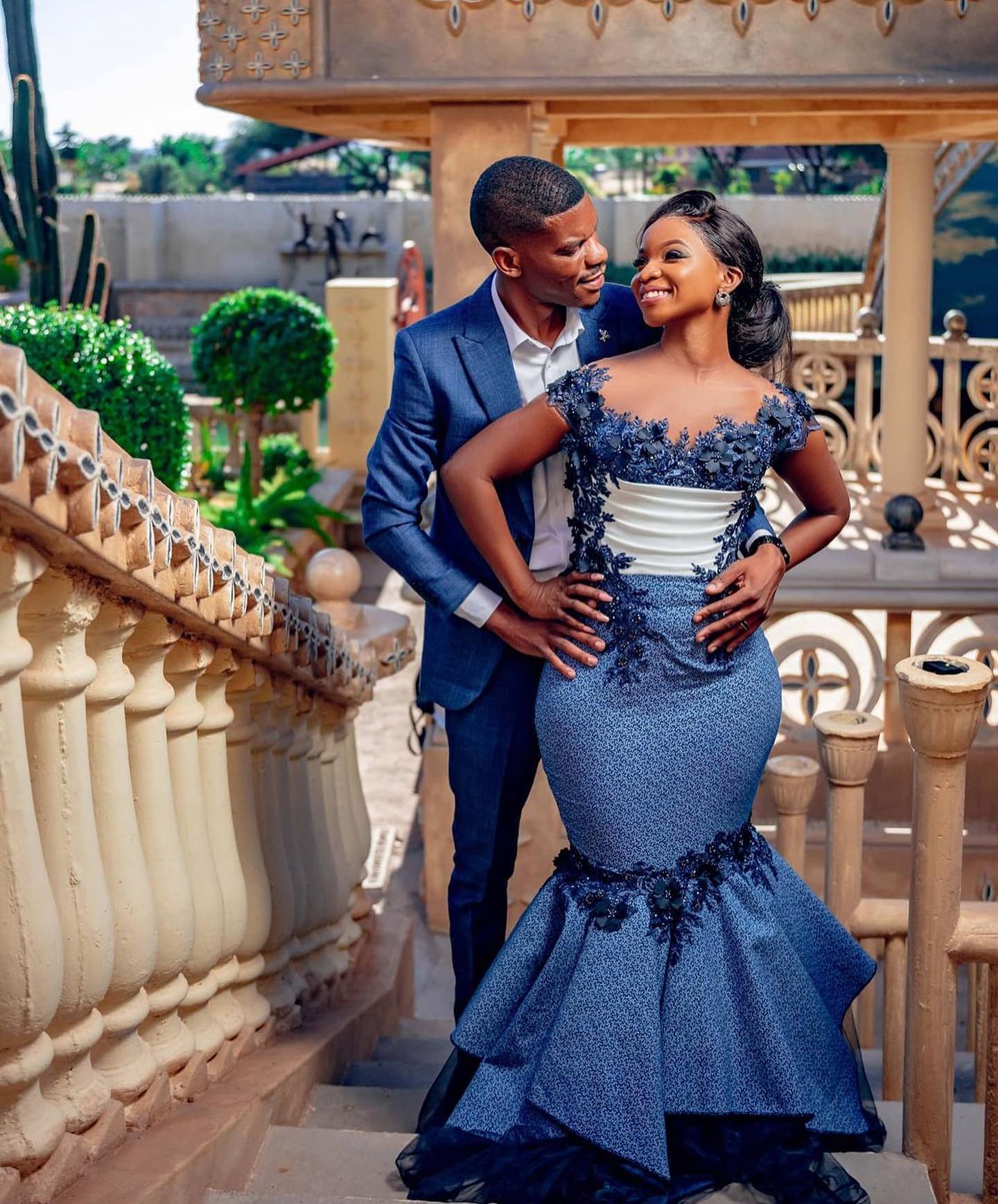

Materials and Fabrics Used
Common materials and fabrics used in making Tswana traditional dresses
The Tswana people of Southern Africa have a rich cultural heritage, and their traditional dresses are a significant part of their identity. These dresses are known for their vibrant colors, intricate designs, and use of various materials and fabrics.
One common material used in making Tswana traditional dresses is cotton. Cotton is a versatile fabric that is comfortable to wear, especially in the hot climate of the region. It is often used as the base fabric for the dresses, providing a lightweight and breathable option.
Another popular fabric used is shweshwe. Shweshwe is a printed cotton fabric that originated in Europe but has become synonymous with Tswana traditional dresses. It features distinctive geometric patterns and bold colors, adding a unique touch to the garments.
In addition to cotton and shweshwe, other materials such as silk, satin, and lace are also used to add elegance and sophistication to Tswana traditional dresses. These fabrics are often incorporated into the design through embellishments, overlays, or trimmings.
The use of beads and embroidery is another characteristic feature of Tswana traditional dresses. These decorative elements are meticulously handcrafted and add intricate details to the garments, showcasing the skill and artistry of the Tswana people.
Overall, Tswana traditional dresses are a beautiful representation of the culture and heritage of the Tswana people. The use of various materials and fabrics, along with exquisite craftsmanship, creates stunning garments that celebrate their traditions and history.
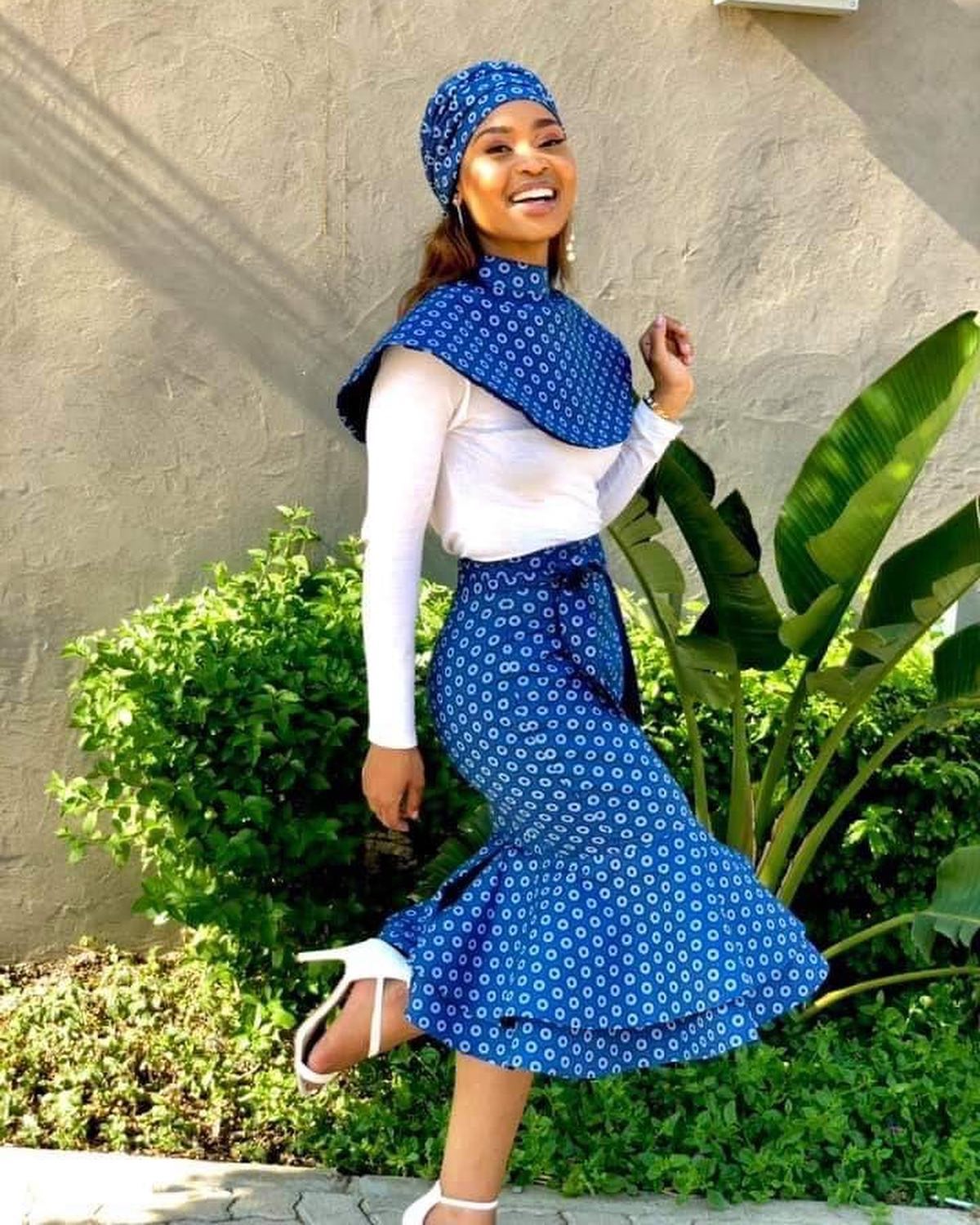
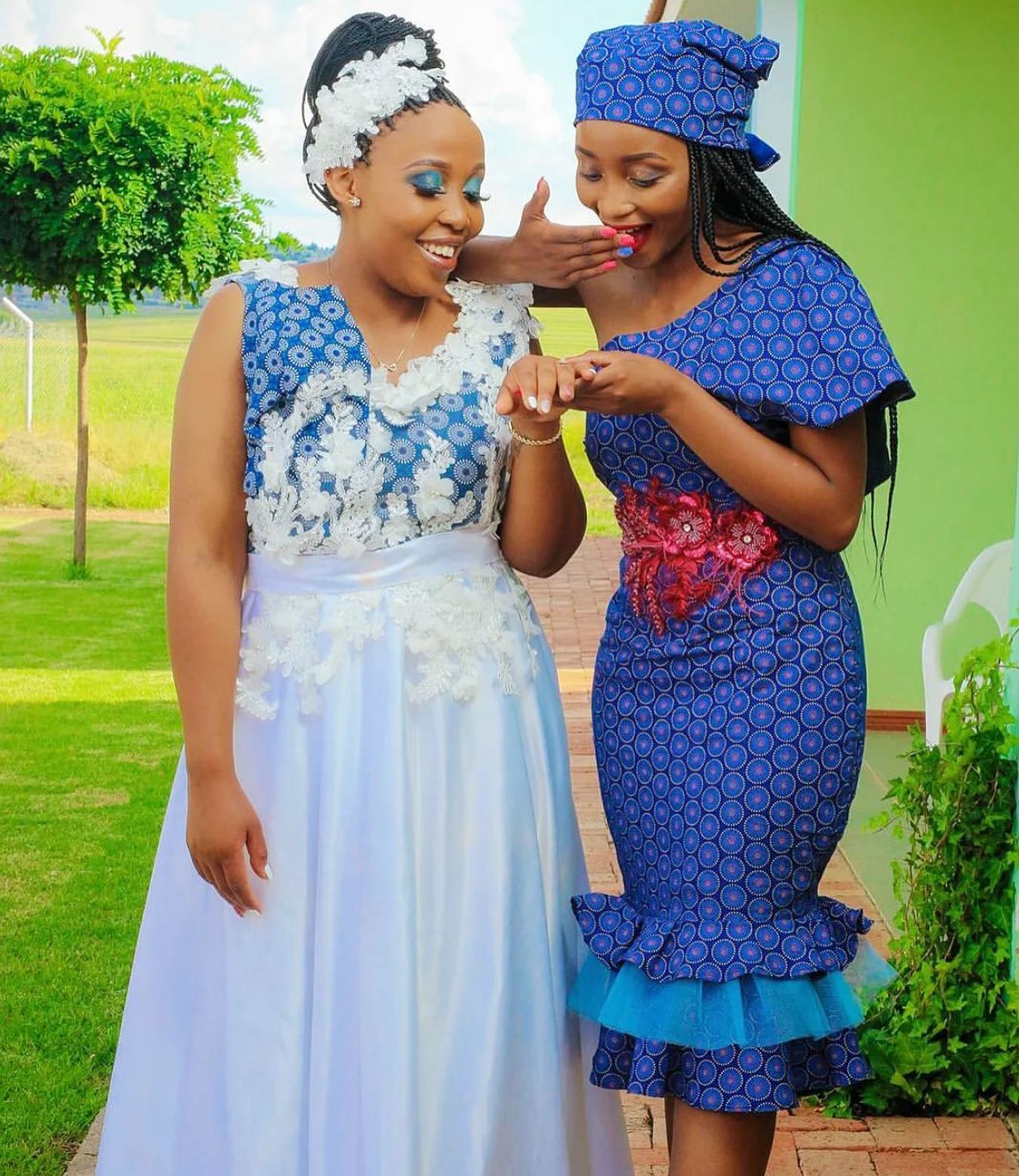
Colors and Patterns
Meaning behind the colors and patterns used in Tswana traditional dresses
Tswana traditional dresses are known for their vibrant colors and intricate patterns, which hold deep cultural significance. The colors used in these dresses often represent different aspects of Tswana culture and traditions. For example, the color blue symbolizes peace and tranquility, while red represents bravery and strength. Yellow is associated with wealth and prosperity, and green signifies fertility and growth.
Patterns in Tswana traditional dresses also carry meaning. The most common pattern is the “letlakala,” which consists of small geometric shapes arranged in a repetitive manner. This pattern represents unity and harmony within the Tswana community. Another popular pattern is the “marakabei,” which features zigzag lines symbolizing the journey of life with its ups and downs.
In addition to their cultural significance, Tswana traditional dresses are also a way for individuals to express their personal style and creativity. Many modern designers have incorporated these traditional elements into contemporary fashion, creating a fusion of old and new.
Whether worn for special occasions or everyday wear, Tswana traditional dresses continue to be cherished for their beauty, symbolism, and connection to Tswana heritage. They serve as a reminder of the rich history and traditions that have shaped the Tswana people throughout the years.
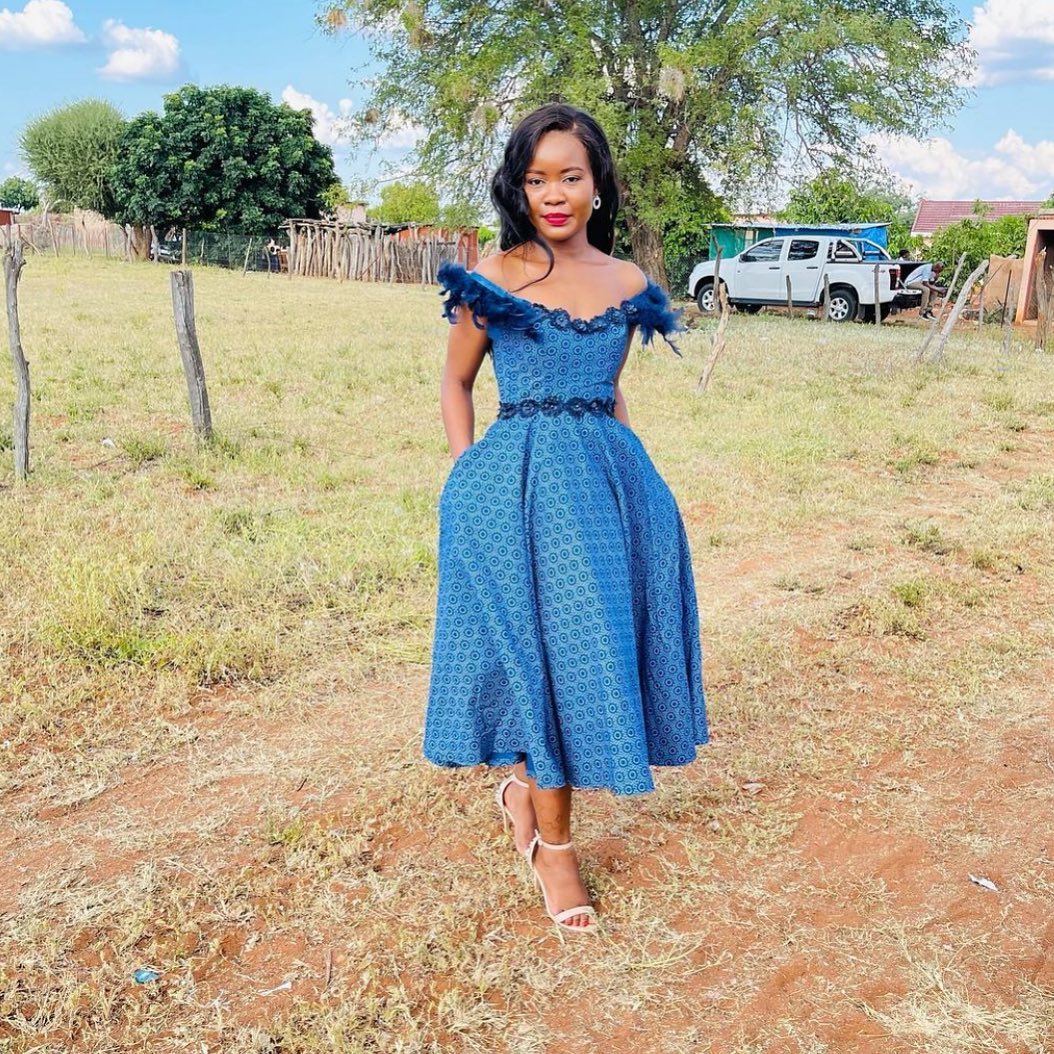
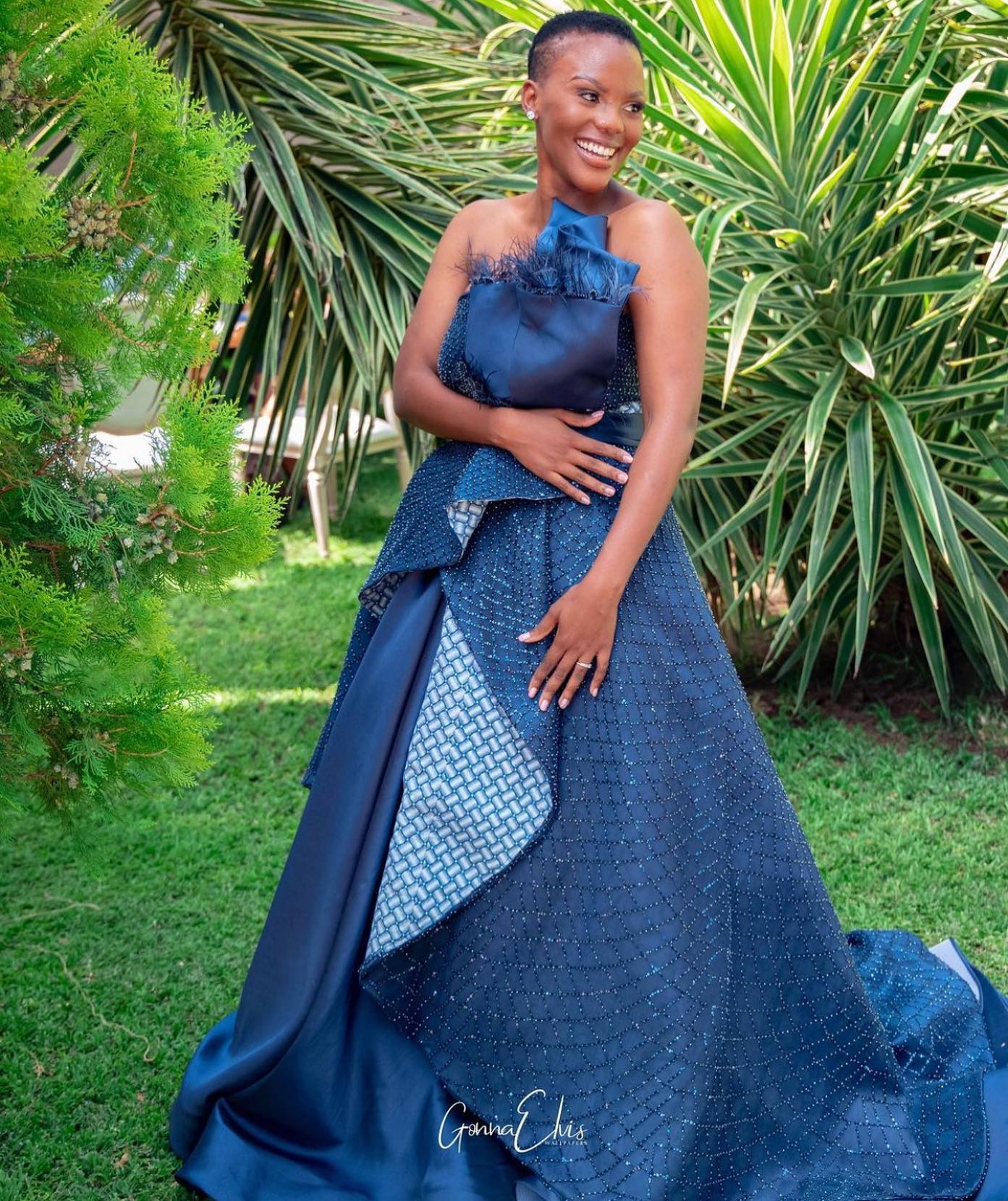
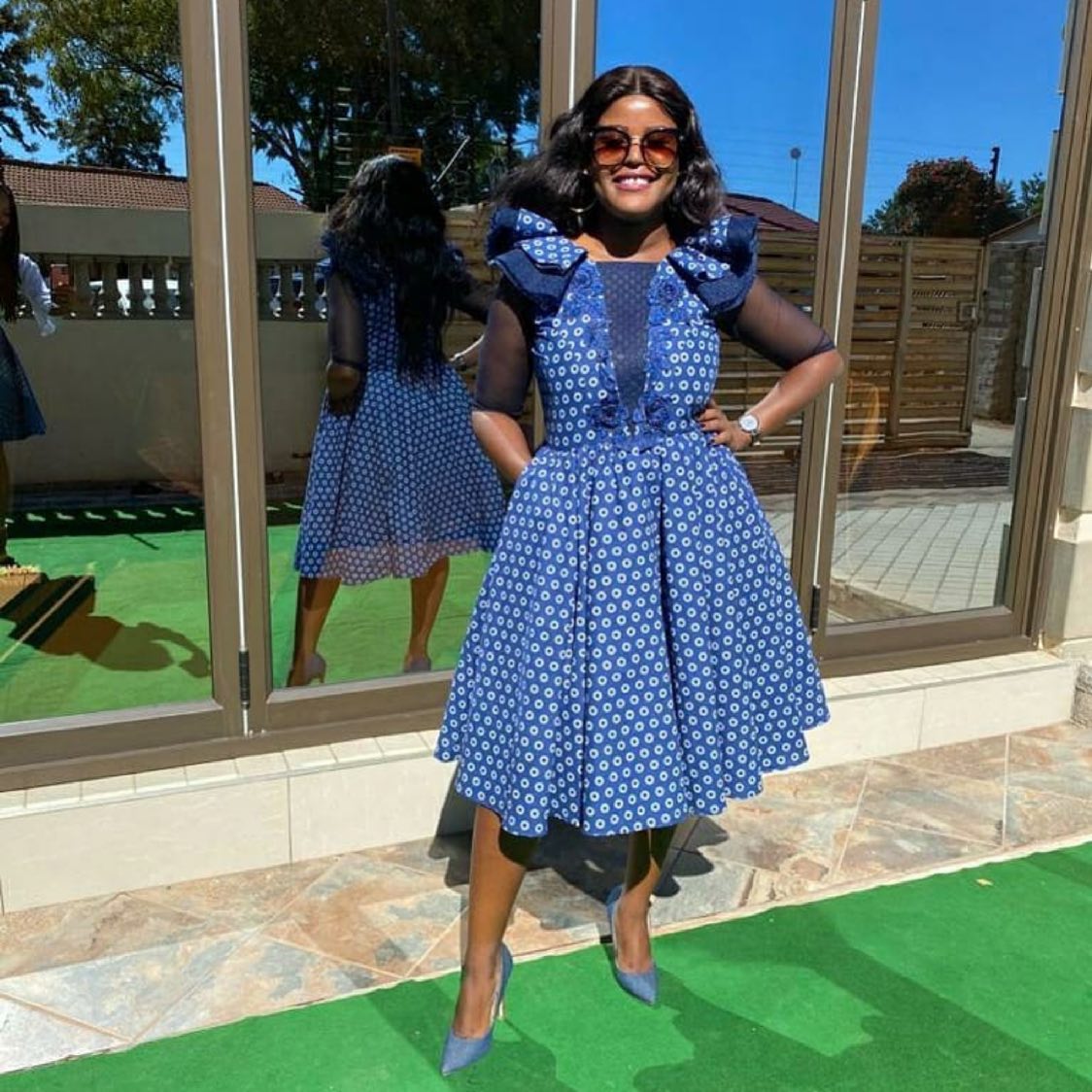

Accessories and Embellishments
Traditional accessories and embellishments that complement Tswana dresses
Tswana traditional dresses are not just garments; they are a celebration of culture and heritage. To complete the look, traditional accessories and embellishments play a vital role. Here are some key elements that complement Tswana dresses:
- Headwrap (Doek): The doek is an essential accessory worn by women to cover their hair. It adds elegance and style to the overall outfit.
- Necklaces: Tswana women often wear beaded necklaces as a symbol of beauty and femininity. These necklaces come in various colors and designs, adding a touch of vibrancy to the attire.
- Bangles: Bangles made from brass or copper are commonly worn by Tswana women. They are believed to bring good luck and prosperity.
- Earrings: Traditional Tswana earrings are usually made from beads or metals like silver or gold. They come in different shapes and sizes, enhancing the beauty of the wearer.
- Belts: Tswana dresses are often accompanied by belts made from leather or fabric. These belts not only add a decorative element but also help define the waistline.
- Shoes: Traditional Tswana shoes, known as mokorotlo, are made from animal hide or leather. They have a unique design and are comfortable to wear.
- Embellishments: Tswana dresses are often adorned with intricate embroidery, beadwork, or appliques. These embellishments showcase the craftsmanship and artistry of the Tswana people.
By incorporating these traditional accessories and embellishments, Tswana women can create a complete and authentic look that pays homage to their cultural heritage.



Modern Interpretations
How Tswana traditional dresses have been adapted to modern fashion trends
The Tswana traditional dress holds a significant place in the culture and history of the Tswana people. Over the years, these traditional dresses have evolved and adapted to modern fashion trends, while still preserving their essence and cultural significance.
In recent times, Tswana traditional dresses have gained popularity not only within the Tswana community but also among fashion enthusiasts worldwide. Designers have taken inspiration from the vibrant colors, intricate patterns, and unique silhouettes of the traditional dresses to create modern interpretations that cater to contemporary tastes.
One notable adaptation is the fusion of traditional elements with Western styles. This blend has resulted in stunning creations that combine the elegance of Tswana aesthetics with the versatility and sophistication of Western fashion. These modern interpretations often feature bold prints, vibrant colors, and innovative designs that showcase the rich heritage of the Tswana culture.
Furthermore, designers have also experimented with different fabrics and materials to give a fresh twist to traditional dresses. While still incorporating traditional textiles such as shweshwe fabric, they have introduced new fabrics like chiffon, silk, and lace to add a touch of modernity and luxury.
The adaptability of Tswana traditional dresses to modern fashion trends has allowed individuals to embrace their cultural heritage while expressing their personal style. Whether it’s for special occasions or everyday wear, these modern interpretations provide a unique blend of tradition and contemporary fashion that appeals to a diverse audience.
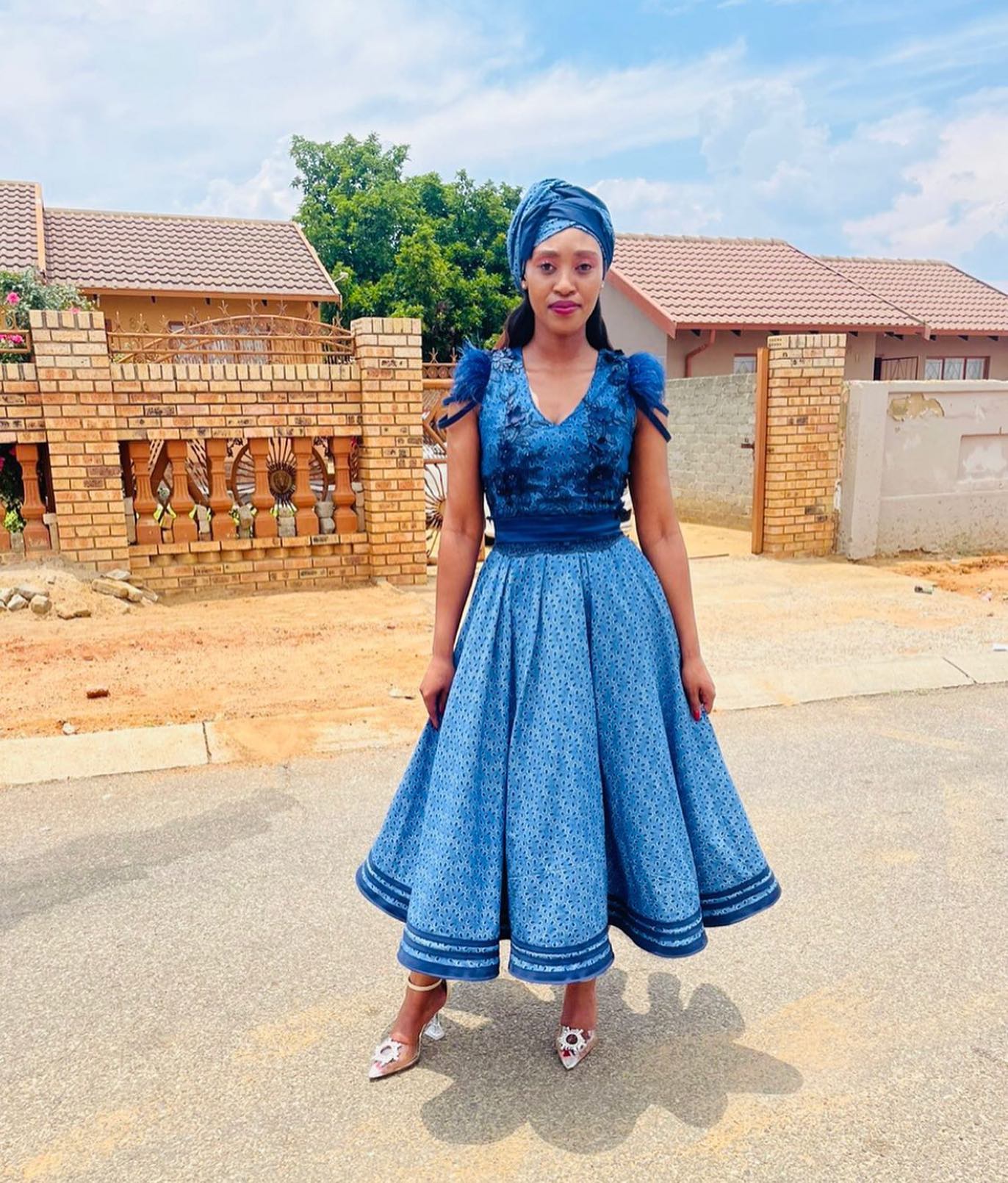
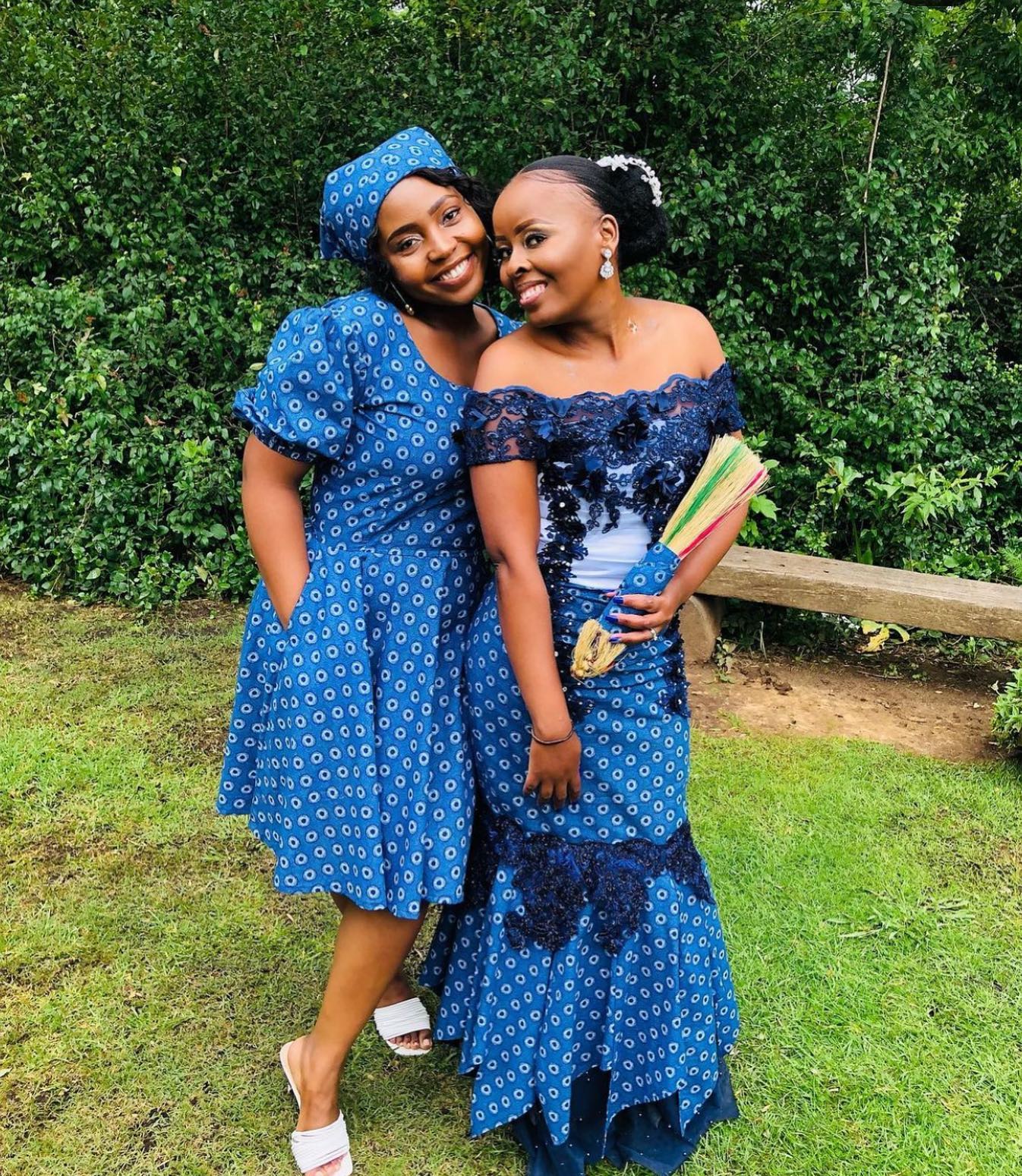
In conclusion, Tswana traditional dresses have successfully transitioned into the modern fashion scene by embracing new styles, fabrics, and designs. This evolution has not only preserved their cultural significance but also made them accessible and appealing to a wider audience.
Cultural Significance
The cultural significance and symbolism associated with Tswana traditional dresses
Tswana traditional dresses hold a deep cultural significance and are an integral part of the Tswana people’s identity. These dresses are not merely garments but represent a rich heritage and history that has been passed down through generations. They reflect the values, beliefs, and traditions of the Tswana culture.
The designs and patterns on Tswana traditional dresses often have symbolic meanings. They can represent various aspects of life, such as fertility, marriage, or social status. The colors used in the dresses also hold significance. For example, red may symbolize love and passion, while blue represents peace and tranquility.
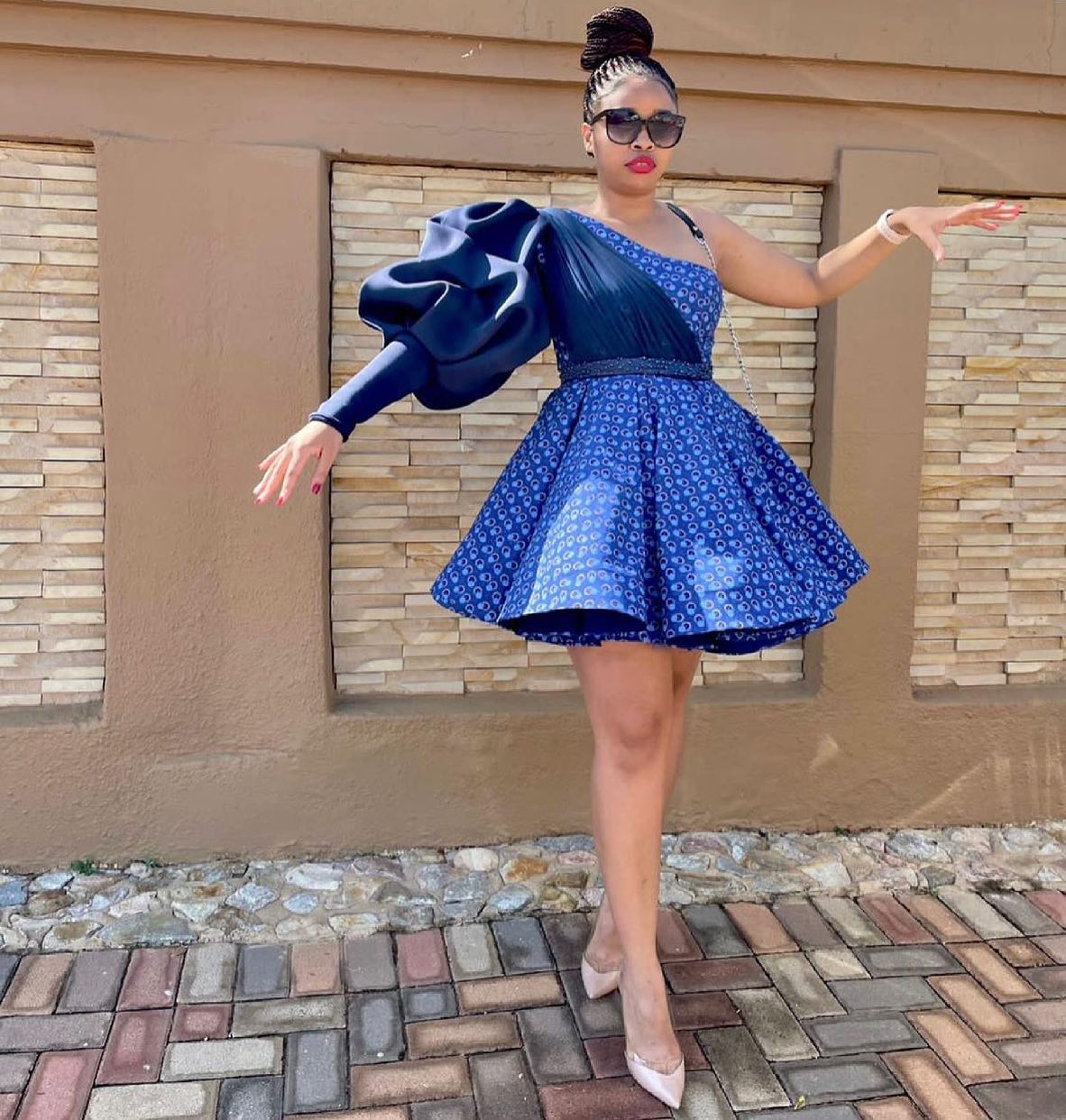
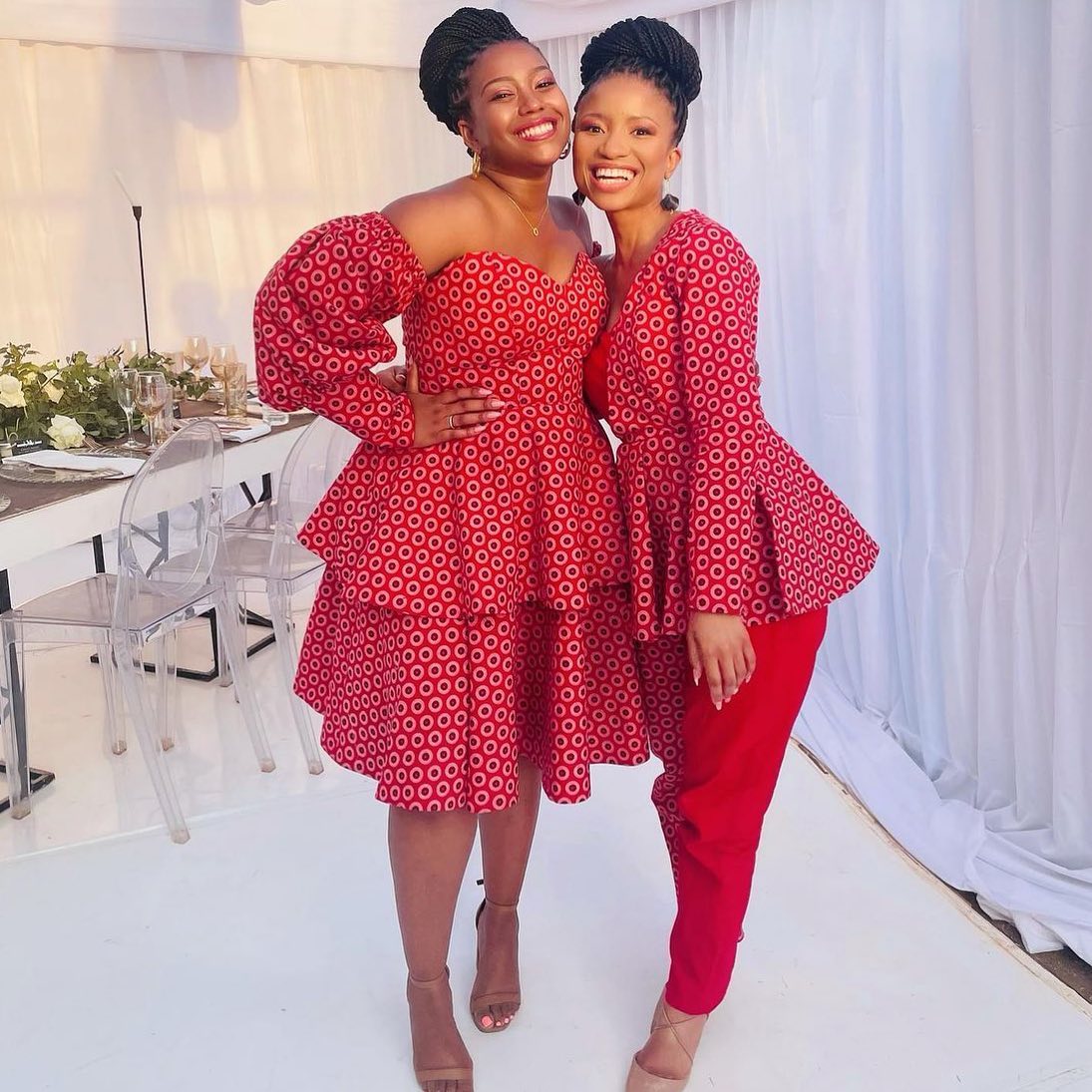
Wearing Tswana traditional dresses is a way for the Tswana people to connect with their roots and preserve their cultural heritage. It is a source of pride and identity for individuals and communities alike. These dresses are often worn during important cultural events, celebrations, and ceremonies.
In recent years, there has been a resurgence in the popularity of Tswana traditional dresses. Many young people are embracing their cultural heritage and choosing to incorporate these dresses into their everyday lives. This has led to a fusion of traditional and modern styles, creating unique and contemporary interpretations of Tswana fashion.
Overall, Tswana traditional dresses play a vital role in preserving the cultural identity of the Tswana people. They serve as a visual representation of their history, values, and traditions. By wearing these dresses, individuals not only celebrate their heritage but also contribute to the ongoing legacy of the Tswana culture.
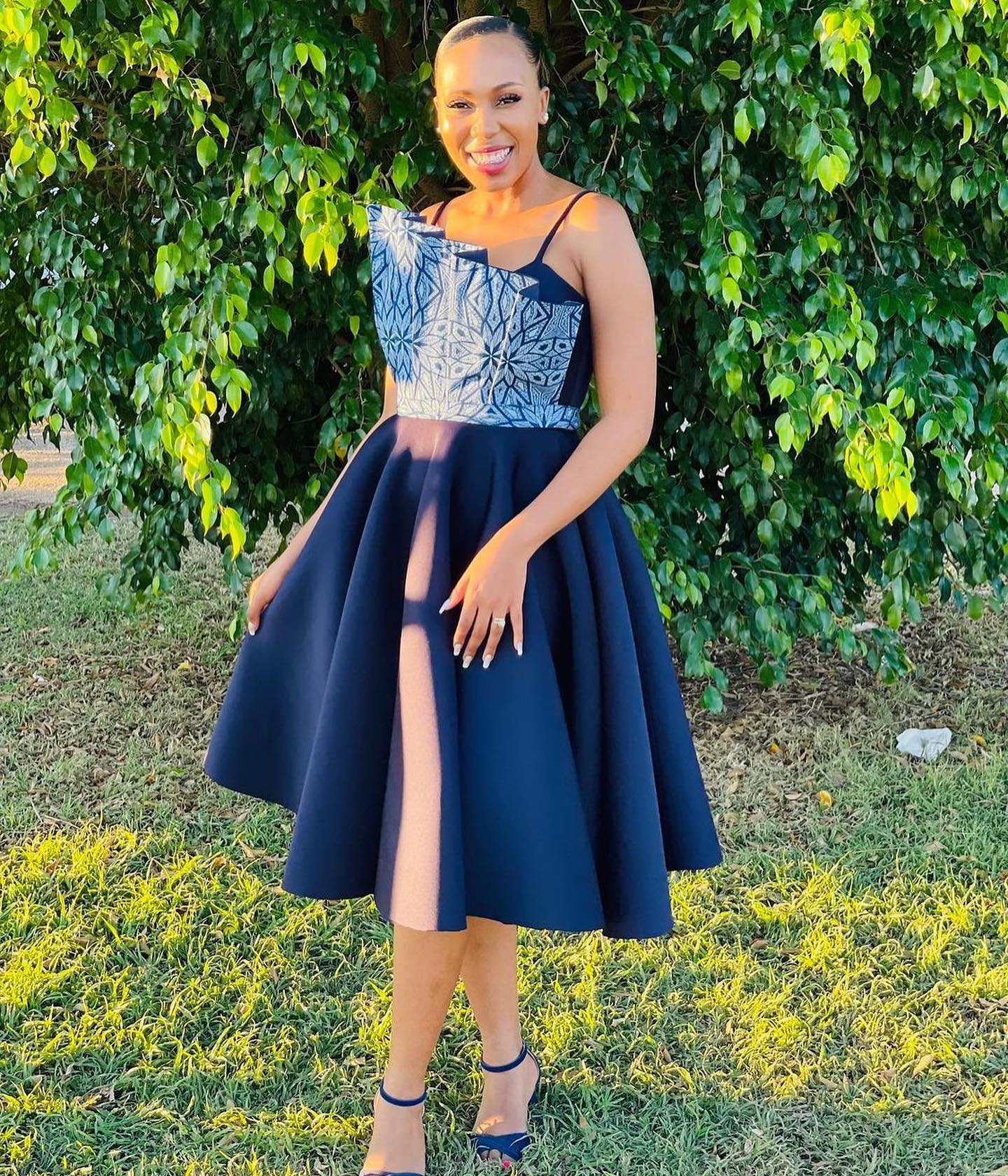
Tswana Traditional Dresses: From Past to Present, a Journey of Fashion Evolution



